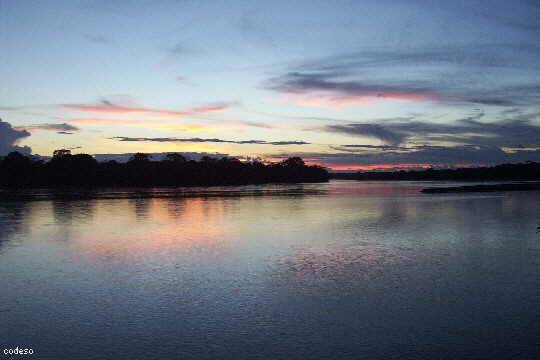Ecuador, a country celebrated for its diverse landscapes and rich biodiversity, is also home to extensive mangrove ecosystems along its coastlines. These often-overlooked natural wonders play a crucial role in the country’s ecology, economy, and climate resilience. In this article, We will discuss the significance of mangroves in Ecuador and the ongoing efforts to preserve them.
Mangroves: Coastal Superheroes
Mangroves are coastal ecosystems characterized by salt-tolerant trees, shrubs, and other vegetation that grow in brackish water where freshwater from rivers and saltwater from the sea meet. Ecuador’s mangroves can be found along its Pacific coast, estuaries, and river deltas, including the renowned Gulf of Guayaquil.
1. Biodiversity Hotspots
Ecuador’s mangroves are incredibly biodiverse, providing a vital habitat for a wide array of plant and animal species. They serve as nurseries and breeding grounds for various fish species, including commercial ones like shrimp and crab. Numerous bird species, such as herons, egrets, and kingfishers, find shelter and sustenance in these mangrove forests.
2. Carbon Storage and Climate Mitigation
Mangroves are renowned for their exceptional capacity to sequester and store carbon dioxide (CO2) from the atmosphere. Despite covering only a small fraction of the Earth’s surface, mangroves are estimated to store more carbon per unit area than many other terrestrial ecosystems, such as rainforests. This makes them critical in the fight against climate change.
3. Coastal Protection
Mangroves act as natural barriers against coastal erosion, storm surges, and tsunamis. Their intricate root systems trap sediments, stabilize shorelines, and dissipate the energy of waves, thereby reducing the impact of coastal disasters and safeguarding nearby communities.
4. Fisheries and Livelihoods
Ecuador’s economy benefits significantly from its mangrove ecosystems. The mangroves are vital for the country’s shrimp farming industry, which is a major contributor to Ecuador’s exports and employment. Additionally, local communities rely on mangrove resources for their livelihoods, including fishing and the collection of crabs and other forest products.
Conservation Efforts in Ecuador
Recognizing the importance of mangroves, Ecuador has undertaken various initiatives to conserve and protect these vital ecosystems:
1. Legal Frameworks and Protected Areas
Ecuador has established legal frameworks and protected areas to safeguard its mangroves. These measures include designating certain areas as protected, regulating land use, and imposing restrictions on activities that could harm these fragile ecosystems.
2. Sustainable Practices
Efforts are underway to promote sustainable practices within the shrimp farming industry, including the implementation of responsible aquaculture practices that reduce the environmental impact on mangrove ecosystems.
3. Community Engagement
Engaging local communities in mangrove conservation is critical. Projects aim to raise awareness among residents about the importance of mangroves and provide alternative livelihoods that reduce the pressure on these ecosystems.
4. Research and Monitoring
Ongoing research and monitoring of mangrove ecosystems help assess their health and resilience to environmental changes. This information informs conservation strategies and helps identify areas that need protection.
The Future of Mangroves in Ecuador
Mangroves in Ecuador are at a crossroads. They face both growing threats, such as urban development and pollution, and the potential for sustainable coexistence with human activities. Recognizing their importance and the irreplaceable services they provide, Ecuador is taking steps to ensure that these coastal superheroes continue to thrive and contribute to the nation’s well-being, biodiversity, and climate resilience. Mangroves in Ecuador are not only the guardians of its coastlines but also the custodians of its future.



Comments